Human Genetics Concepts and Applications 10th Edition Lewis Test Bank
$38.00
Human Genetics Concepts and Applications 10th Edition Lewis Test Bank Download
- Description
- Reviews (0)
Description
You will receive this product immediate after placing the order
ISBN-10: 0073525308
ISBN-13: 9780073525303 978-0073525303
1. The difference in mode of inheritance between Huntington disease and cystic fibrosis is that
A. Huntington disease only affects men and cystic fibrosis affects both sexes.
B.Huntington disease skips generations and only affects children, whereas cystic fibrosis can strike at any
age and never skips generations.
C. Huntington disease does not skip generations but cystic fibrosis can.
D.A person with Huntington disease can have unaffected parents, but a person with cystic fibrosis must
have an affected parent.
E. Huntington disease affects females and cystic fibrosis affects males.
2. Cystic fibrosis is autosomal recessive. This means that
A. both sexes can be affected and affected individuals and carriers pass the mutation.
B. carrier mothers pass the mutation to some of their sons, but not to their daughters.
C. each affected individual has at least one affected parent.
D. both sexes are affected because new mutations occur frequently.
E. in any particular family, only one sex can be affected.
3. A very difficult aspect of Huntington disease is that
A. it affects different people in a family at very different ages.
B. it affects different people in a family in different parts of the body.
C. it affects different people in a family in different parts of the brain.
D. a family may include individuals at different stages of the illness.
E. the disease can become infectious, and pass even to those who do not have the mutation.
4. Gregor Mendel is known for
A. studying natural selection in the animal life on the Galapagos.
B. breeding plants to demonstrate the logic behind inherited trait transmission.
C. experiments that demonstrated the direction of blood’s circulation in the body.
D. breeding chickens to reveal the laws of inheritance.
E. conquering Asia, leaving his Y chromosome in many descendants.
5. Mendel followed the transmission of traits through several generations in
A. fruit flies.
B. frogs.
C. peas.
D. bacteria.
E. the mustard weed.
6. Mendel called physical units responsible for the inheritance of traits “characters.” The basis for his first
law is that characters
A. separate from each other during meiosis.
B. are carried on separate chromosomes.
C. can exist as multiple alleles.
D. are inherited in random combinations.
E. can be cloned using nuclear transfer.
7. A person who has two identical alleles for a particular gene is _______ for that gene.
A. recessive
B. mutant
C. dominant
D. heterozygous
E. homozygous
8. Alleles are
A. alternate forms of a gene.
B. genes near each other on a chromosome.
C. genes at opposite ends of a chromosome.
D. genes that are only in pea plants.
E. two genes that have the same effect on the phenotype.
9. In pea plants, the allele for tall (T) is dominant to the allele for short (t). The genotype for a short pea
plant is __.
A. TT
B. Tt
C. tt
D. Tt or tt
E. TT or tt
10. A heterozygote has
A. two different alleles for a gene.
B. two of the same alleles for a gene.
C. only one allele for a gene.
D. an extra genome.
E. one copy of each sex chromosome.
11. Genotype refers to
A. the number of alleles of a gene that a person has.
B. the combination of alleles for a particular gene.
C. the person’s entire genome sequence.
D. the appearance of a trait.
E. gene expression at a particular time.
12. Which of the following represents a monohybrid cross?
A. Bb x Bb
B. AaBb x AaBb
C. BB x bb
D. AABB x aabb
E. a x b
13. An autosomal dominant trait
A. passes from mother to son only.
B. skips generations.
C. can be carried by unaffected individuals.
D. can affect either sex.
E. is only seen when homozygous.
14. A(n) ______ cross yields a genotypic ratio of 1:2:1 and a phenotypic ratio of 3:1.
A. allelic
B. monohybrid
C. test
D. dihybrid
E. trihybrid
15. Mendel’s laws derive from
A. mitosis.
B. meiosis.
C. evolution.
D. processes unique to pea plants.
E. calculus and algebra.
16. When Mendel crossed pure breeding peas having yellow seed color (YY) with pure breeding peas having
green seed color (yy), all of the offspring had yellow seed color. These results mean that yellow seed
color is the
A. genotype.
B. dominant phenotype.
C. mode of inheritance.
D. recessive phenotype.
E. mutant phenotype.
17. A Punnett square displays
A. members of a family and their phenotypes.
B. paired chromosomes in size order.
C. DNA sequences and the proteins they encode.
D. the probabilities of how alleles combine in offspring.
E. only the males in a pedigree.
18. The inheritance of eye color indicates that
A. a single gene is the only factor that determines eye color.
B. many different genes determine eye color, each contributing to different degrees.
C. eye color is sensitive to what the mother ate while pregnant.
D. other characteristics, such as the texture at the back of the eye, can affect the phenotype.
E. a person’s sex influences inheritance of eye color.
19. The wild type eye color for humans is
A. brown.
B. blue.
C. green.
D. hazel.
E. pink.
20. Mode of inheritance reflects
A. whether the gene is on an autosome or sex chromosome and whether the allele is recessive or
dominant.
B. whether the allele is transmitted from the male or the female.
C. whether the allele is received by a male or a female.
D. the number of genes that determine a trait.
E. the size of the chromosome that includes the gene in question and the sex of the parent transmitting it.
21. Hillary is 8 years old and has neuronal ceroid lipofuscinosis, also known as Batten disease. It is
autosomal recessive. She was fine until age five, when she began to lose her vision and stumble. She
had learning difficulties in school and was diagnosed at age six. Hillary may only live into her twenties,
experiencing dementia and seizures. Her younger brother Jaden, age six, is healthy, as are her parents.
The probability that Jaden is a heterozygote is
A. 1/8.
B. 1/4.
C. 1/3.
D. 2/3.
E. 0.
22.
Jaden is six years old. His sister Hillary has the autosomal recessive condition neuronal ceroid
lipofuscinosis that affects learning and coordination. Their parents are healthy. The probability that Jaden
is a homozygote for the wild type allele of the gene that causes the condition is
2-12-2013
A. 1/8.
B. 1/4.
C. 1/3.
D. 2/3.
E. 0.
23. Jermaine and Shikia are healthy parents of three young children. The oldest two, Bethany and Amber,
are healthy, and they are six and four, respectively. Their youngest child was born with Peeling Skin
Syndrome two years ago. Roscoe’s skin constantly peels, and is red and itchy. If Jermaine and Shikia
have another child, the probability that he or she will inherit the skin condition is
A. 1/8.
B. 1/4.
C. 1/3.
D. 2/3.
E. 0.
24. One reason that dominant diseases remain in populations is that
A. they do not make people as sick as recessive illnesses.
B. they do not run in families.
C. they often do not produce symptoms until a person has already had children.
D. they affect more females than males.
E. they are more curable than recessive diseases.
25. Eric and Janelle are carriers of the recessive allele causing Tay-Sachs disease, which is lethal in early
childhood. If they have a healthy child, what is the probability that this child would NOT be a carrier of
Tay-Sachs disease?
A. 1
B. 2/3
C. 1/2
D. 1/3
E. 78
26. Sickle cell disease is inherited as an autosomal recessive trait. The genotype of an individual with sickle
cell disease is
A. homozygous dominant.
B. homozygous recessive.
C. heterozygous dominant.
D. heterozygous recessive.
E. unable to be determined by the phenotype.
27. The phenotypic ratio expected from a dihybrid cross involving complete dominance is
A. 3:1.
B. 1:2:1.
C. 9:3:1.
D. 9:3:3:1.
E. 4:1.
Be the first to review “Human Genetics Concepts and Applications 10th Edition Lewis Test Bank”
You must be logged in to post a review.

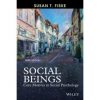

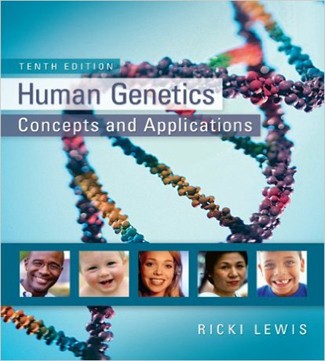

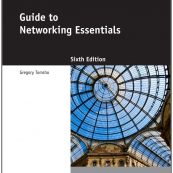


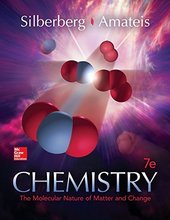

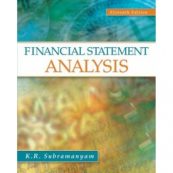

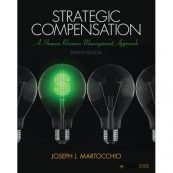
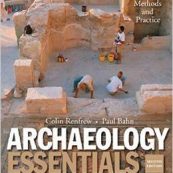
Reviews
There are no reviews yet.